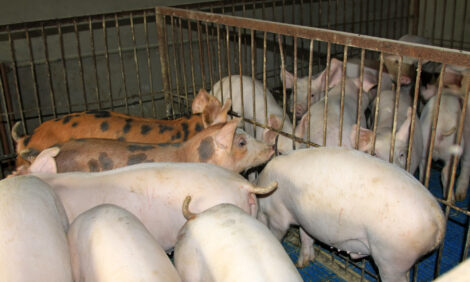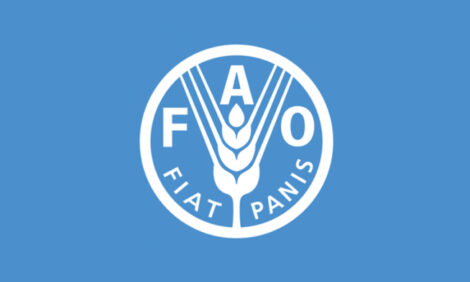|
Need a Product or service?
|
|
Funded by a $2.4 million U.S. Department of Agriculture grant, the four-year project has completed its first year and researchers are optimistic their findings will shed light on the occurrence of microbial organisms in animal waste and how to reduce the risk of infection to humans.
"We are trying to find out how to control organisms that are excreted by food-producing animals into the environment," said Mo Saif, chair of the Food Animal Health Research Program (FAHRP) at the Ohio Agricultural Research and Development Center (OARDC) in Wooster, Ohio. "Many of these pathogens cause mild or no disease in animals, but they can be fatal for humans. We are looking at waste management treatments and feeding regimens that would help eliminate those infectious agents."
There are more than 150 zoonotic organisms -- those that can spread infection from animals to humans -- and many of them are present in animal feces and urine. They include bacteria (such as E. coli, salmonella and campylobacter), viruses (such as rotavirus, calicivirus and myxovirus), and protozoa (such as cryptosporidium and giardia lamblia). Manure, used as a natural fertilizer on fields and organic crops, is just one way pathogens are spread in the environment.
"Because of the concerns with food safety and the use of animal manure on agricultural land, we are basically going to study every food-borne pathogen in manure to see if there is a risk associated with public health," said Qijing Zhang, a scientist with FAHRP and one of the project collaborators.
Food-borne illnesses are considered to be the most serious food safety problem in the United States. According to the U.S. Centers for Disease Control and Prevention, food-borne pathogens annually cause an estimated 325,000 illnesses resulting in hospitalization, 76 million cases of gastrointestinal disease and 5,000 deaths.
The project is analyzing animal waste from swine and poultry -- broilers, layers and turkeys -- operations in Ohio and North Carolina. Thus far, scientists have collected numerous samples and developed tests to detect any pathogen that may be present in them.
"We are looking at waste before and after it's treated, and at critical points during the treatment process," Saif explained. "The samples are collected during different seasons of the year from farms that handle manure using different methods."
FAHRP experts on the most common food-borne pathogens are in charge of testing samples. They are Linda Saif (caliciviruses), Ken Thiel (rotaviruses), Lucy Ward (cryptosporidium), and Zhang (campylobacter and E. coli). North Carolina State University microbiologist Brian Sheldon is testing for salmonella.
The endurance of microbial organisms in liquid manure applied to fields is also being researched. For that purpose, OARDC soil scientist Warren Dick collected 15 blocks of soil from a no-till field in Wooster, which were then encased with polyurethane foam on all four sides and transported to a greenhouse.
The 1-foot cubes were sliced in eight horizontal layers and a grid with 64 squares was placed on top of them to map earthworm burrows and other macropores. Liquid manure spiked with non-infectious E. coli O157 and cryptosporidium was applied to the blocks at recommended field rates. The soil samples were later exposed to simulated rainfall at various intensities and durations. Before applying manure, the surface of some of the blocks was disturbed to allow for comparison between no-till and plow-tillage treatments.
"We want to find out whether these pathogens die after awhile or colonize the soil," said Dick, a professor in the Department of Natural Resources. "It's also important to know if they can survive without a quick rain following the application of manure in the soil."
The grid-mapped, layered blocks will allow Dick and collaborators to test for pathogen survival after different rainfall conditions and in the presence or absence of macropores in the soil. They also will tell researchers how deep in the ground microbial organisms can sink after manure applications.
"People are concerned about the high porosity of no-till fields, which allows the manure to go into the soil much easier," Dick said. "This is an important concern in Ohio, where so much of the soybeans and corn are planted in no-till fields."
Another OARDC researcher, Fred Michel, is studying the role different waste management technologies play in the occurrence of food-borne pathogens in manure.
"A number of animal waste management technologies have been developed in the last few years," said Michel, a professor in the Department of Food, Agricultural, and Biological Engineering. "There's a need to compare these new technologies and traditional management methods to see which are better for control of food-borne pathogens."
One of these emerging technologies is the high-rise hog building (HRHB), which was developed in Ohio in 1998. In the HRHB, modeled after chicken barns, hogs are placed on an elevated second floor. Manure collects on the first level in an above-ground, bedded pit, where it is dried with fans. The result is a high-value solid that can be used by the farmer or sold as an alternative to chemical fertilizers.
In conventional hog barns, manure is stored as a liquid below ground, where it stays anaerobic. When the liquid starts to break down, it releases odorous gases and contributes to the development of pathogens.
Michel said there are advantages to using systems that produce solid manure as opposed to liquid manure. Dry animal waste is easier to transport and market and eliminates the need for lagoons. By staying aerobic, this manure has a low odor and is less likely to host hazardous organisms. Also, when composted, pathogens that may be present in dry manure are killed by the high temperature -- at least 130 degrees Fahrenheit -- generated during the several weeks that the process lasts.
Other swine technologies under scrutiny include the solid-liquid separation and constructed wetland treatment and different anaerobic digestion systems, which produce biogas. Poultry waste management technologies -- such as dirt floor with built-up litter, the Broilermatic Cage growing system and the composting-based poultry system - also are being studied.
Another objective of the project is to determine the effect of different diets on swine and poultry gut health and the levels of pathogens in their excreta. This work will be carried out by North Carolina State University researchers.
"Our ultimate goal is to find the most economical way of handling animal waste, which will also result in control and elimination of pathogens," Saif pointed out. "At the end of the project, we will develop a program to educate animal producers on how to reduce the risk of spreading pathogens through their animal and waste management procedures."
Source: Ag Answers - Ohio State University and Purdue University - 6th June 2003
















